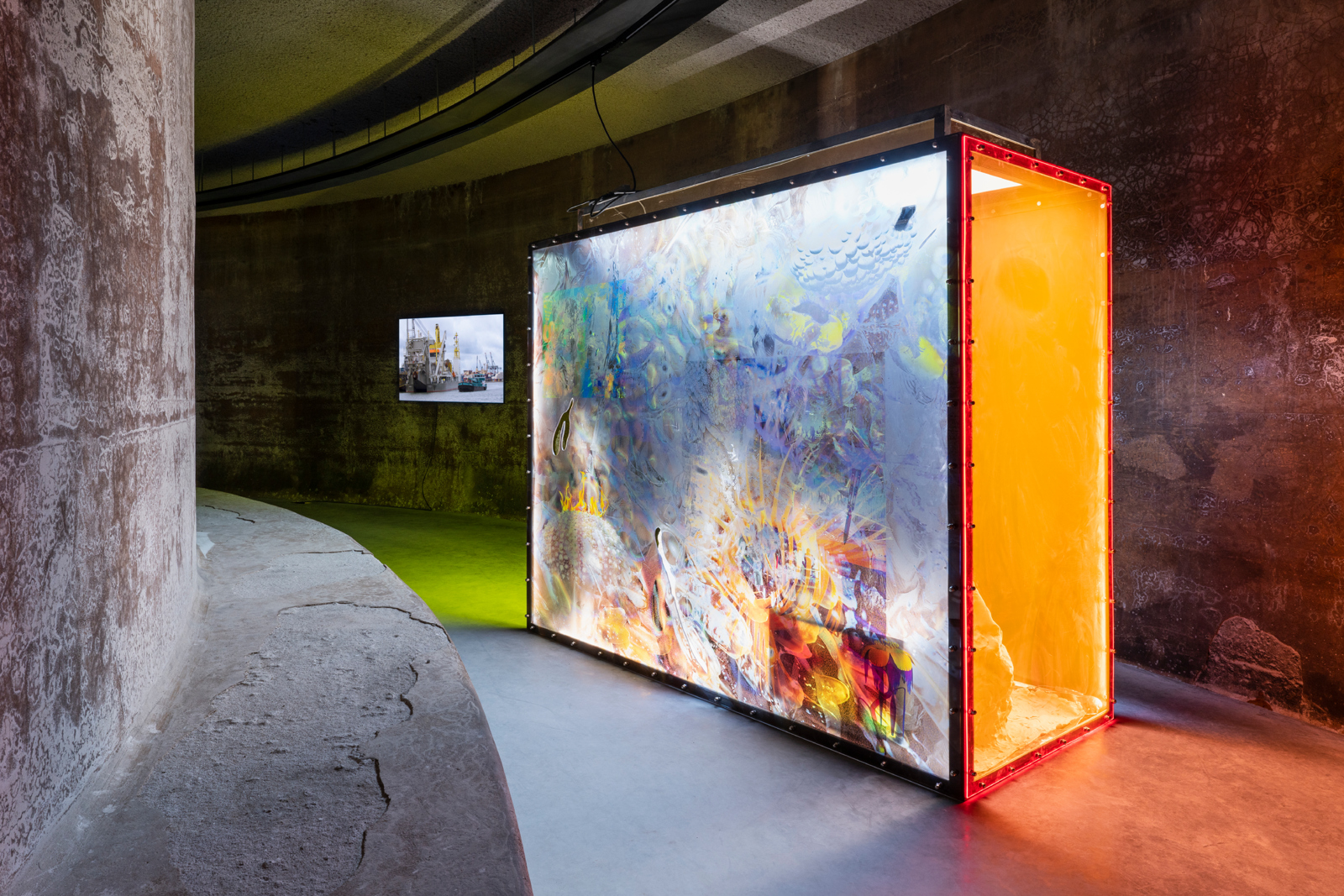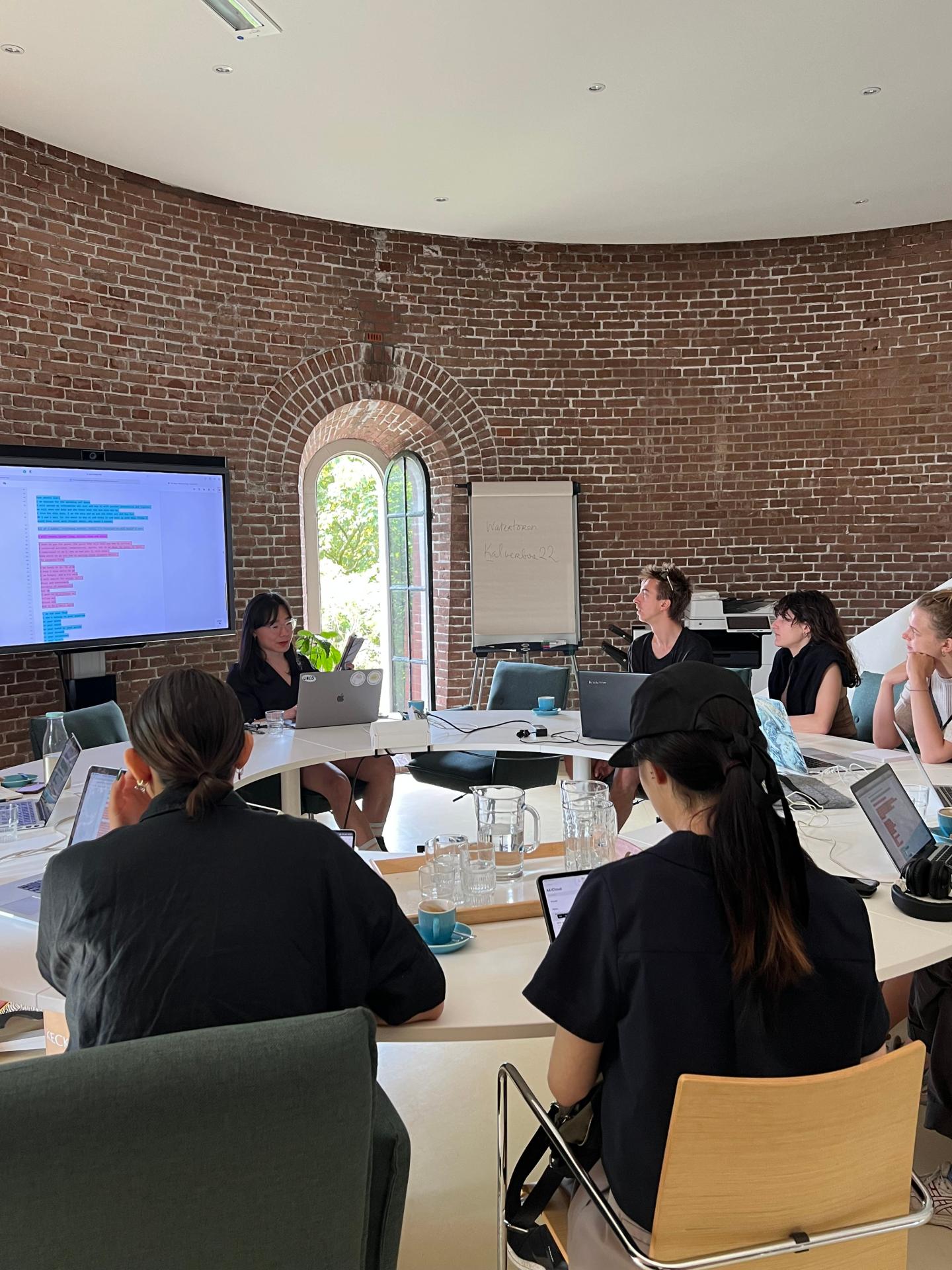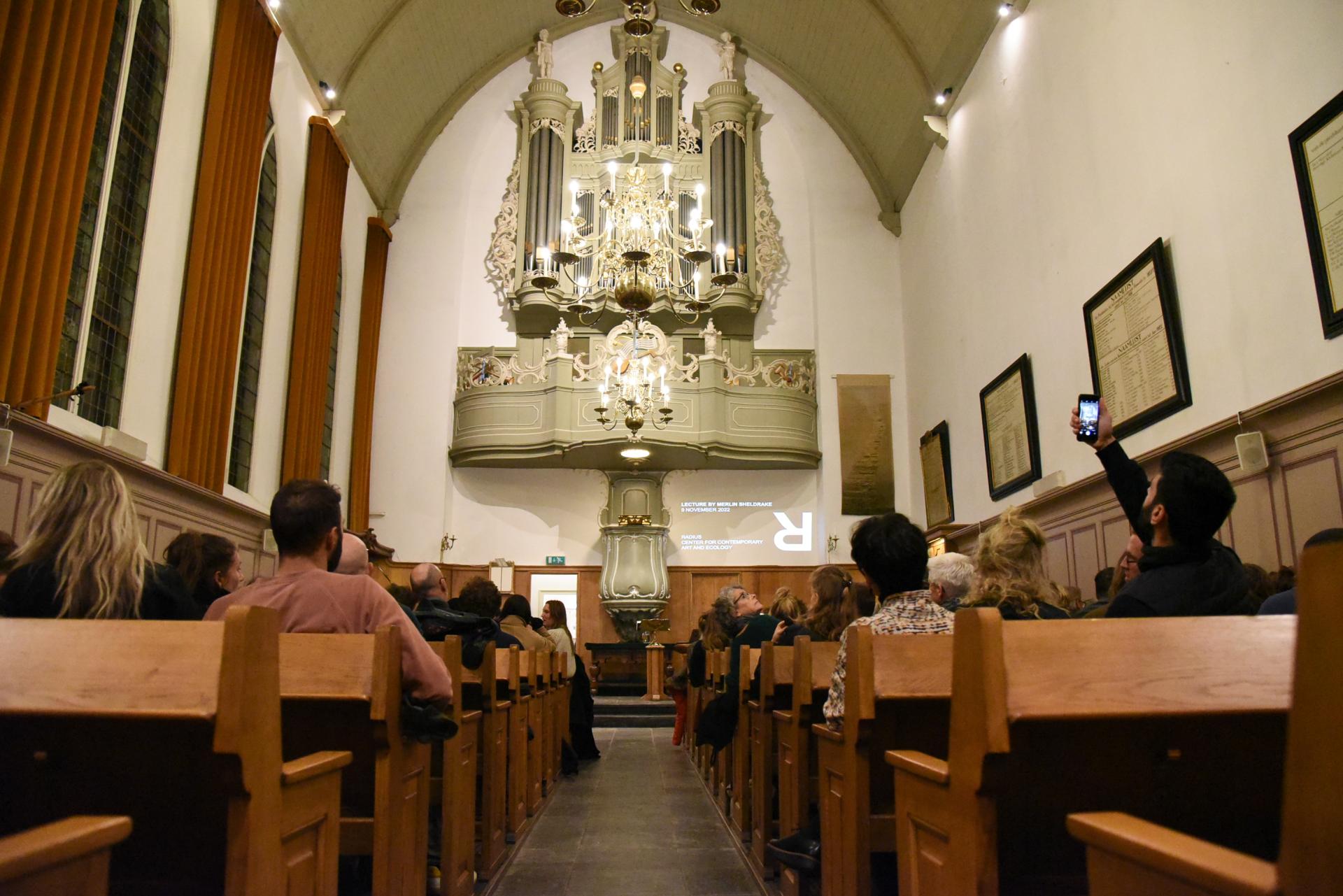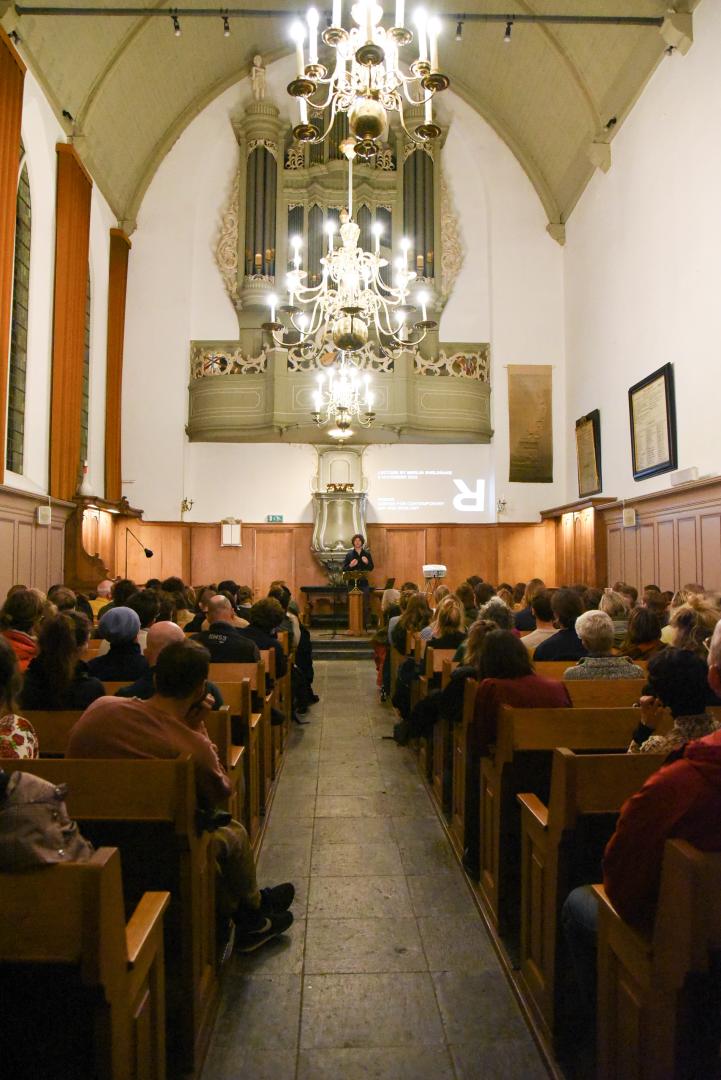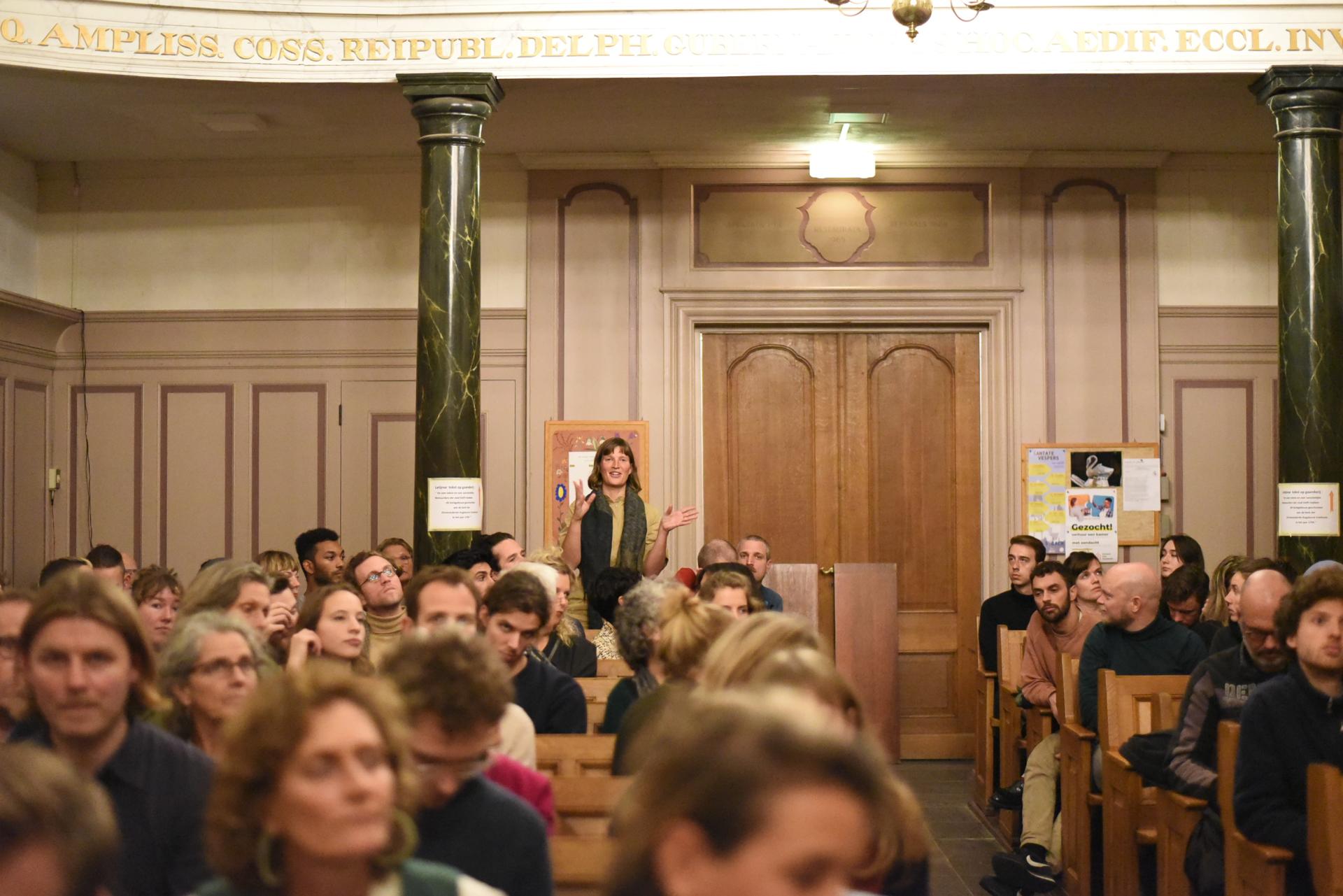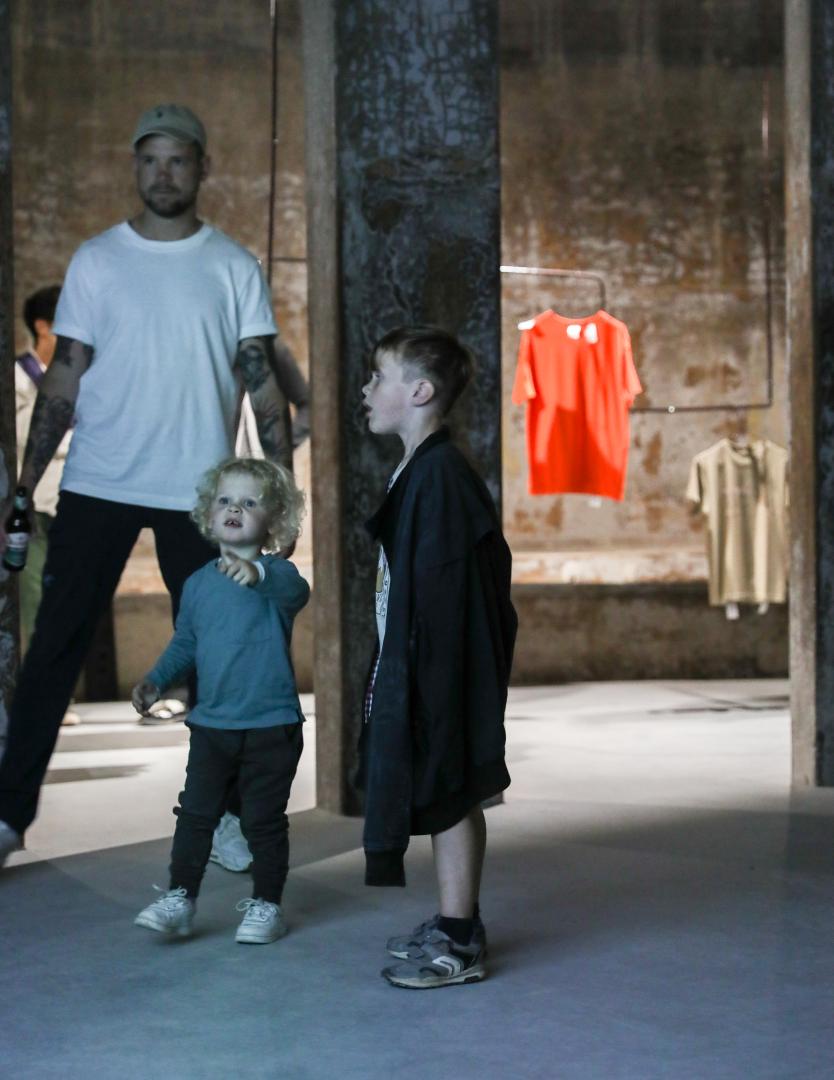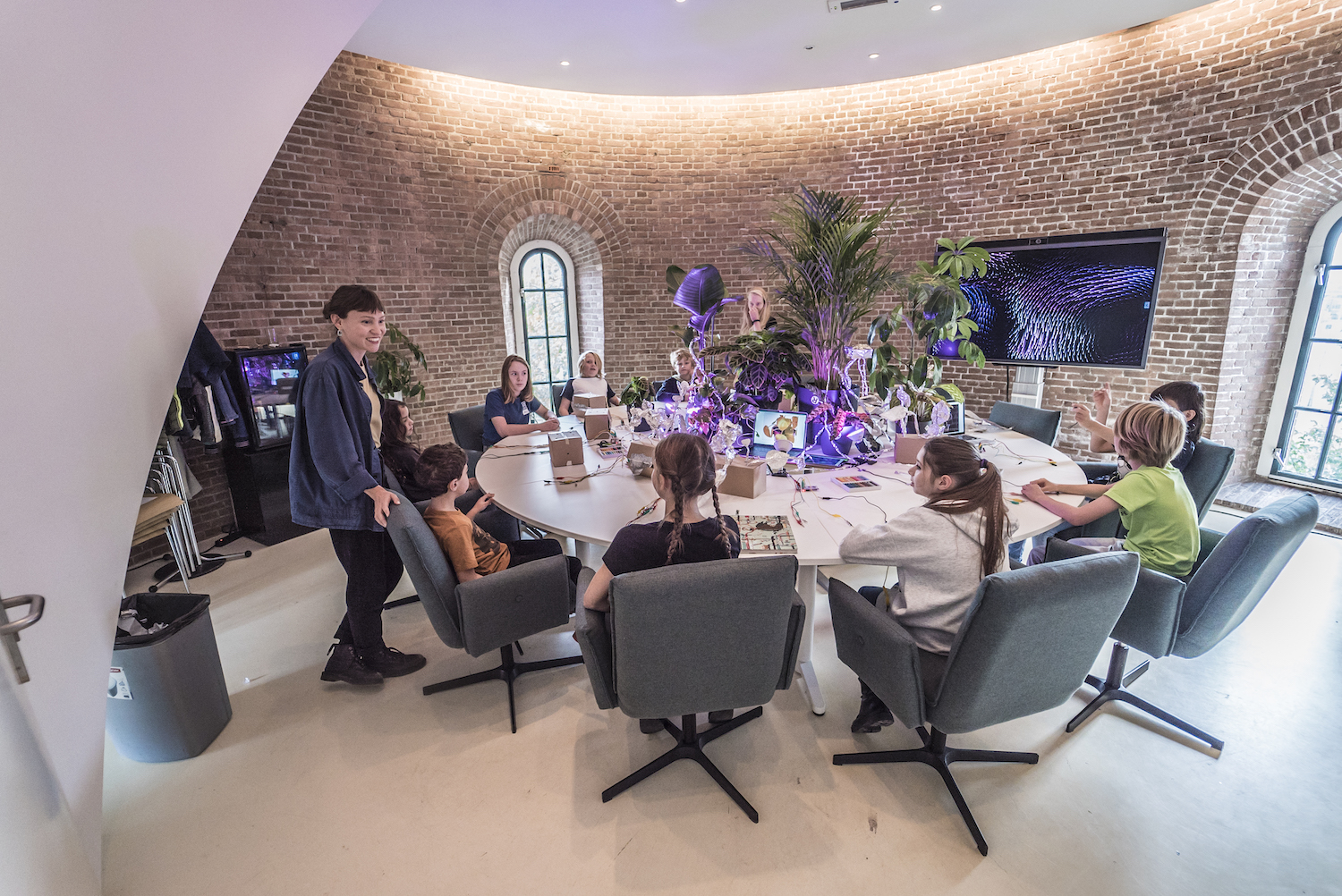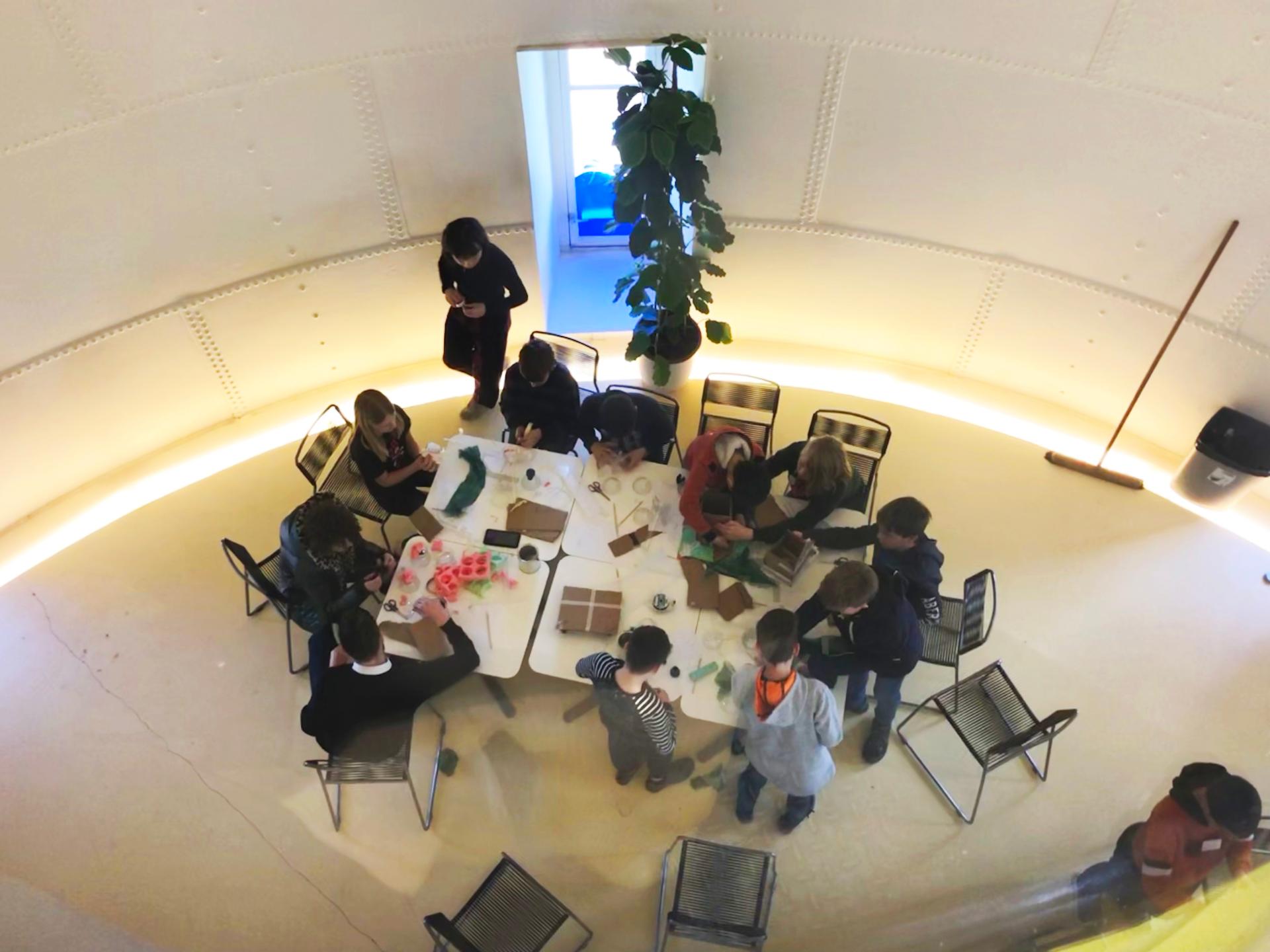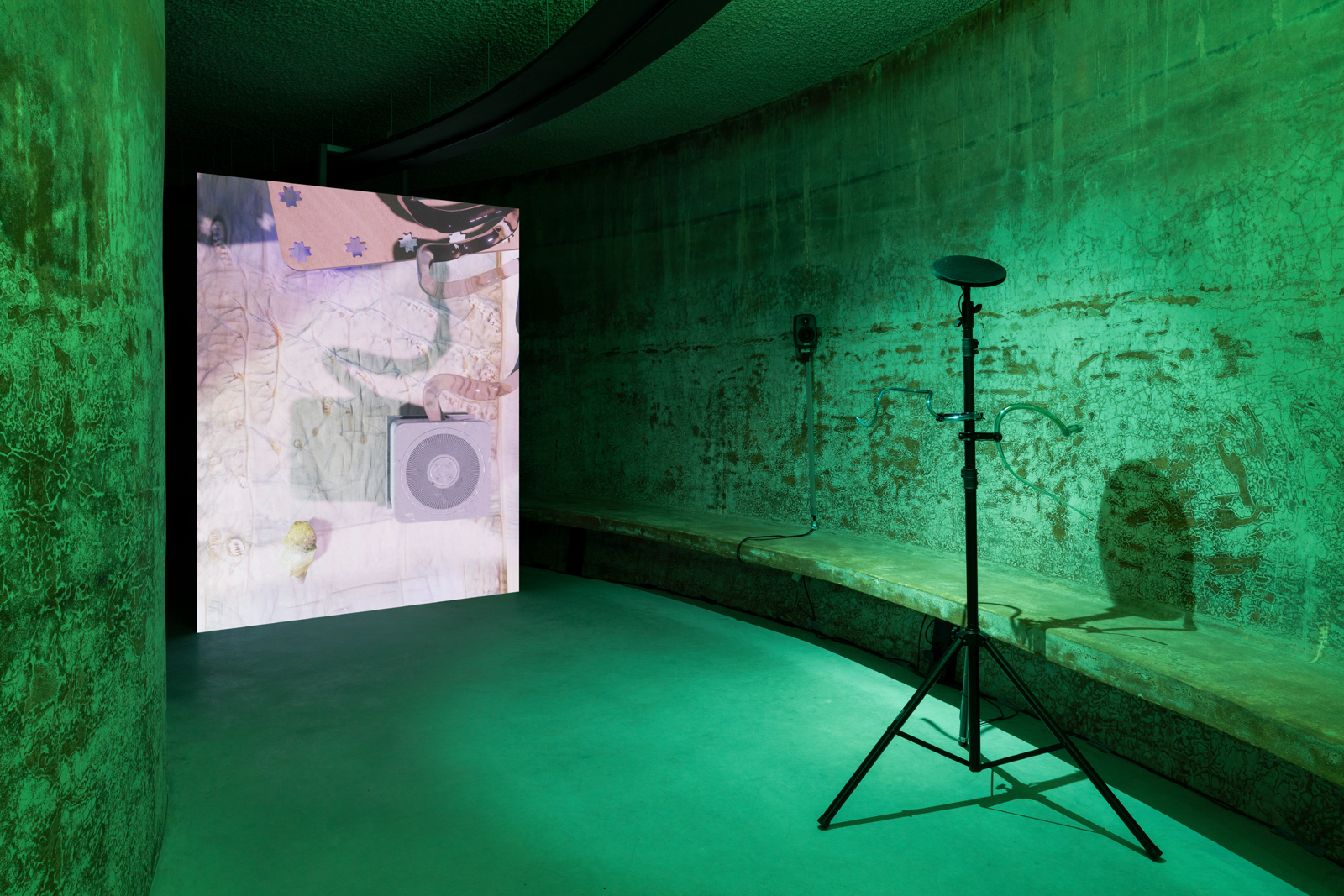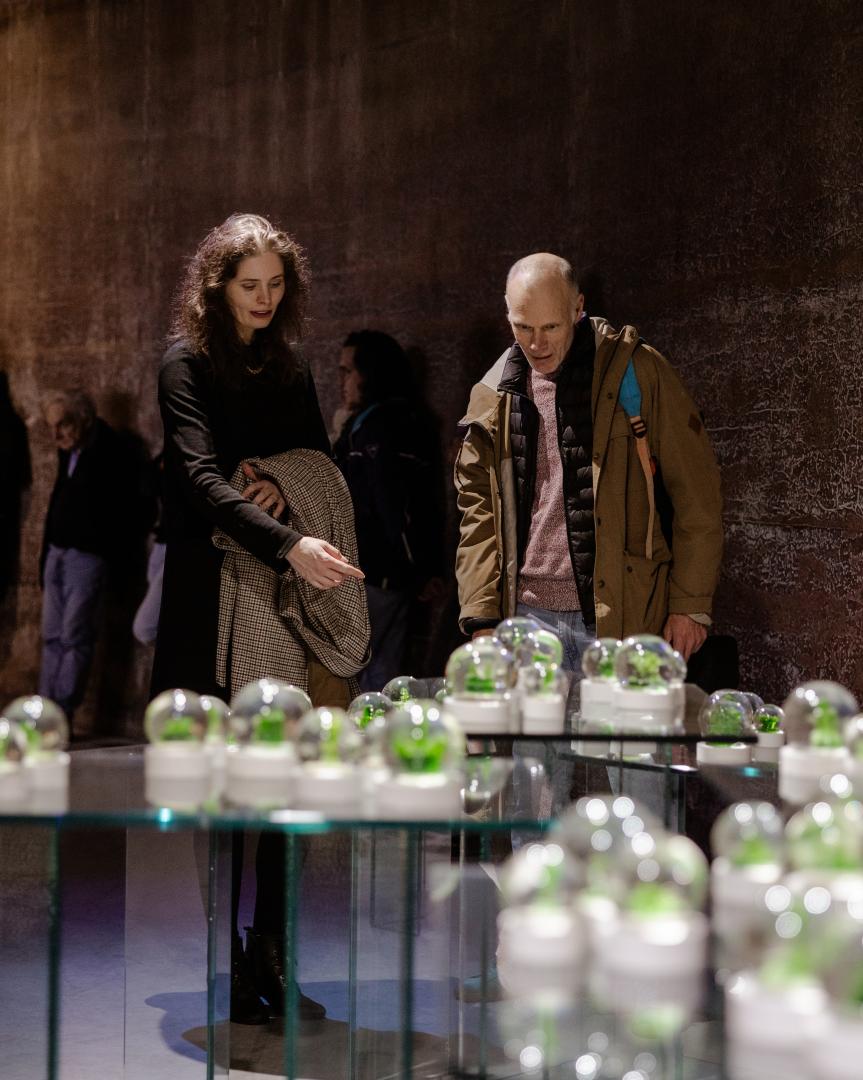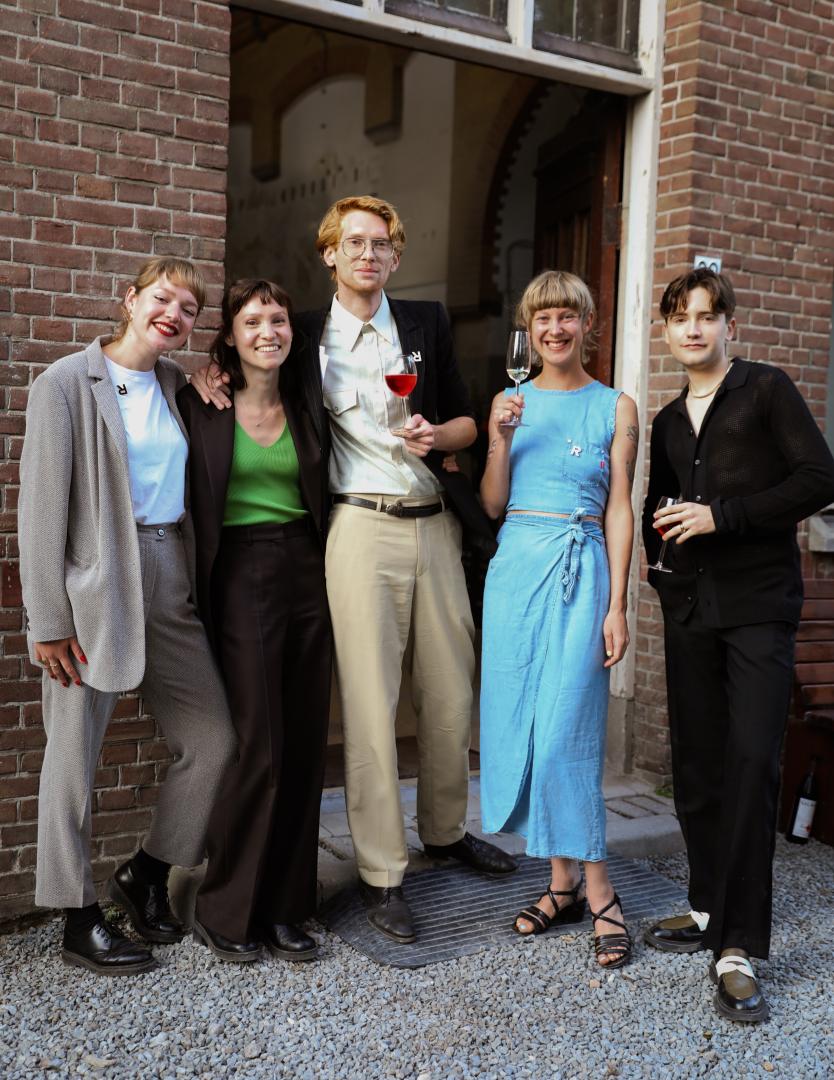Underland
Basic information
Project Title
Underland
Full project title
Underland: the foundation of a center for contemporary art and ecology
Category
Reconnecting with nature
Project Description
Underland was the foundational programme of RADIUS, center for contemporary art and ecology, which opened in Delft on May 12th 2022. Underland encompassed six exhibitions, seven public programme events, and two educational projects. Underland was articulated as a public conversation starter for a continuous programme around ecology and climate concerns, as facilitated through current artistic and scientific practices.
Geographical Scope
Local
Project Region
Primarily Delft, but also we collaborated with people and spaces in The Hague, Rotterdam, and Amsterdam. , Netherlands
Urban or rural issues
It addresses urban-rural linkages
Physical or other transformations
It refers to other types of transformations (soft investment)
EU Programme or fund
No
Description of the project
Summary
Underland was the first-ever project at RADIUS, center for contemporary art and ecology. We opened the non-profit art center in May 2022 with the aim to ground a space where ecology and climate change could we discussed permanently through the aid of artistic and scientific practices. Underland consisted of six exhibitions, seven events as part of a public programme, and two educational projects. The exhibitions welcomed more than 55 artists from around the globe, and encompassed the following main issues: global water crises, over-indebtedness to fossil fuels, alternative methods of generating energy, mycelial communication networks, feminine knowledge on land and its historical struggles, and shelter in increasingly volatile ecosystems.
Our target groups were and continue to be varied, as we believe that addressing ecology knows no boundaries. Our most immediate group are inhabitants of Delft, to which we reached out relentlessly to be part of our programmes and build the institution together. By building bridges with other institutions like TU Delft (Technical University), we also started becoming acquainted and collaborating with academics and scientists, as well as students. Because of the promixity of The Hague, Rotterdam, and Amsterdam, we also received and worked with their visitors. We too work internationally with artists and collaborators inside and outside Europe.
Our objectives were to present a wide-ranging selection of ecological topics and concerns as conversation starters to our visitors. They are topics that we will revisit in the years to come. Moreover, we aimed to be an inclusive space with different entry points where people would feel invited and welcome to learn and share ideas, from local issues to planetary problems.
We received more than 7.500 visitors during our first year programme (May 8, 2022-February 12, 2023), and we engaged with more than 800 people in our public and educational programmes.
Our target groups were and continue to be varied, as we believe that addressing ecology knows no boundaries. Our most immediate group are inhabitants of Delft, to which we reached out relentlessly to be part of our programmes and build the institution together. By building bridges with other institutions like TU Delft (Technical University), we also started becoming acquainted and collaborating with academics and scientists, as well as students. Because of the promixity of The Hague, Rotterdam, and Amsterdam, we also received and worked with their visitors. We too work internationally with artists and collaborators inside and outside Europe.
Our objectives were to present a wide-ranging selection of ecological topics and concerns as conversation starters to our visitors. They are topics that we will revisit in the years to come. Moreover, we aimed to be an inclusive space with different entry points where people would feel invited and welcome to learn and share ideas, from local issues to planetary problems.
We received more than 7.500 visitors during our first year programme (May 8, 2022-February 12, 2023), and we engaged with more than 800 people in our public and educational programmes.
Key objectives for sustainability
In our foundational year, we made efforts in becoming a blueprint for a sustainable art space that deals with sustainability, especially in consideration that we are the first artistic institution at the intersection of art and ecology in the Netherlands.
Since our first exhibition, we have developing a scheme to reuse as much materials as possible for all our exhibitions, such as wood or textiles. We are now working with other art spaces in the country towards a shared database where we can exchange and gift materials to each other in order to promote recycling in the arts. We also give materials to artists to develop their work and practices.
90% of collaborators that travelled from outside the Netherlands were offered train tickets instead of plane tickets. We also fostered possibilities for collaborators to work with other Dutch spaces to maximise their journey and justify the longer trip.
We also use eco-friendly paper, and work with electricity-based heating in the building.
We believe sustainability is an onging conversation to be had internally and externally, and that although we are indebted to certain unsustainable networks, we should strive to understand them and to gradually break free from them
Since our first exhibition, we have developing a scheme to reuse as much materials as possible for all our exhibitions, such as wood or textiles. We are now working with other art spaces in the country towards a shared database where we can exchange and gift materials to each other in order to promote recycling in the arts. We also give materials to artists to develop their work and practices.
90% of collaborators that travelled from outside the Netherlands were offered train tickets instead of plane tickets. We also fostered possibilities for collaborators to work with other Dutch spaces to maximise their journey and justify the longer trip.
We also use eco-friendly paper, and work with electricity-based heating in the building.
We believe sustainability is an onging conversation to be had internally and externally, and that although we are indebted to certain unsustainable networks, we should strive to understand them and to gradually break free from them
Key objectives for aesthetics and quality
By presenting six exhibitions consiting of more than 55 national and international artists, we offered our visitors with a wide-ranging selection of artistic practices and aesthetic experiences. Not dissimilar from science, art has the capacity to raise perception and consciousness for those elements, processes and dimensions that bypass our human sensorial capacities altogether. Both engaged in developing languages to inform an understanding and gain traction with our speculative present, we believe that art as a field must extend and apply itself without invitation, to trigger responses where none have been called for, and to confront what we take for granted. The artists in Underland seeked to unearth and undermine a singular human-centred perspective as to register more reality thanks to multiple templates.
Speaking to many of our visitors, a common concern was the difficulty in coming to terms with ecological problems just by looking at facts and numbers. As we grow numb to the effects of climate change due to their normalisation in our day to day life, we believe it is crucial to offer other ways to grapple with them. Art is a powerful means to expand our awareness of ecology and to be called upon to act in more sustainable, just, and caring ways.
Using imagination and climate action, RADIUS focusses on shaping the blueprints for regenerative and sustainable more-than-human worlds.
Our exhibitions and events were well-received by press and critics, as well as national and international funding bodies that have been supporting us since our foundation.
Speaking to many of our visitors, a common concern was the difficulty in coming to terms with ecological problems just by looking at facts and numbers. As we grow numb to the effects of climate change due to their normalisation in our day to day life, we believe it is crucial to offer other ways to grapple with them. Art is a powerful means to expand our awareness of ecology and to be called upon to act in more sustainable, just, and caring ways.
Using imagination and climate action, RADIUS focusses on shaping the blueprints for regenerative and sustainable more-than-human worlds.
Our exhibitions and events were well-received by press and critics, as well as national and international funding bodies that have been supporting us since our foundation.
Key objectives for inclusion
Because we work in intersectional approaches, we believe that inclusion is a core duty of ours. First, we think of who speaks and about what. We seek to work with artists that are able to embody their research and practice, and that have the agency to speak about certain topics. That means that in order to raise awareness of the encompassing effects of ecological decline, an artistic programme, as well as a public programme, requires a plural and inclusive composition, especially considering the importante to give a voice to those who have been under- or misrepresented.
We try to be as accessible as possible beyond the potential physical constraints of our space. We can do that best in our programmes by offering different fares in ticketing, allowing students to visit freely or with a discount at times, and by offering them both in Dutch and in English (in consideration of the high amount of non-Dutch speakers that study and work in the Netherlands).
To be inclusive also means to be transparent. We are striving to enlarge our team (five people at the moment) so as to create more roles that can enrich the institution in terms of gender expression, age, and background. On the other hand, in 2022 we transitioned from voluntary-based hosts who would welcome and guide visitors to hosts that are paid fairly towards the end of Underland, in the beginning of 2023.
During Underland we also hosted our closest neighbours to discuss cohabitation of the land we share to start developing friendly relationships that can become specific projects in the near future.
We try to be as accessible as possible beyond the potential physical constraints of our space. We can do that best in our programmes by offering different fares in ticketing, allowing students to visit freely or with a discount at times, and by offering them both in Dutch and in English (in consideration of the high amount of non-Dutch speakers that study and work in the Netherlands).
To be inclusive also means to be transparent. We are striving to enlarge our team (five people at the moment) so as to create more roles that can enrich the institution in terms of gender expression, age, and background. On the other hand, in 2022 we transitioned from voluntary-based hosts who would welcome and guide visitors to hosts that are paid fairly towards the end of Underland, in the beginning of 2023.
During Underland we also hosted our closest neighbours to discuss cohabitation of the land we share to start developing friendly relationships that can become specific projects in the near future.
Results in relation to category
We received more than 7.500 visitors during our first year programme (May 8, 2022-February 12, 2023), and we engaged with more than 800 people in our public and educational programmes.
We were generously covered and review in the Dutch press.
We situated ourselves as an institution in the field.
We started building local and international networks with artists, thinkers, activitists, and citizens.
We were generously covered and review in the Dutch press.
We situated ourselves as an institution in the field.
We started building local and international networks with artists, thinkers, activitists, and citizens.
How Citizens benefit
Our audience has a huge role in how our art center evolves. During Underland, it was crucial for us to understand who was visiting us and for what purposes. Therefore, we had a PhD student working with us for two months, carrying out interviews to gain better knowledge on the reasons and impressions from visitors.
Citizens are mostly involved in our education and public programmes. In the first, mostly focused on kids and teenagers, they participated in projects that empowered them to express their concerns on climate change while thinking on lines of action collaboratively. On the other hand, those who attended our extensive public programme were engaged with the topics in different manners, either more hands-on on workshops or more question/opinion-sharing in lectures, panels, and presentations.
During Underland, we took feedback from our visitors and changed things accordingly, for instance with the information on the exhibitions. We tried different registers and points of view in our exhibition essays, so that there would be several entry points to the topics and that complexity would be scaled accordingly.
Citizens are mostly involved in our education and public programmes. In the first, mostly focused on kids and teenagers, they participated in projects that empowered them to express their concerns on climate change while thinking on lines of action collaboratively. On the other hand, those who attended our extensive public programme were engaged with the topics in different manners, either more hands-on on workshops or more question/opinion-sharing in lectures, panels, and presentations.
During Underland, we took feedback from our visitors and changed things accordingly, for instance with the information on the exhibitions. We tried different registers and points of view in our exhibition essays, so that there would be several entry points to the topics and that complexity would be scaled accordingly.
Physical or other transformations
It refers to other types of transformations (soft investment)
Innovative character
The main innovative trait of RADIUS is that the first art center completely devoted to contemporary art and ecology in the Netherlands, and it's also quite unique in the broader European context. We believe it is crucial to offer a permanent space for discussion of ecology and climate change, compared to the more periodical treatment of them in other art spaces. Our innovation lies in our specificity, and yet we feel certain of the manifold points of view, urgencies, and topics that we can cover. As we are writing programmes until 2028 currently, we see the vastness of the field, and we aim to relentlessly cover it.
Disciplines/knowledge reflected
We welcomed many different disciplines and fields: ecology, feminism, gender studies, history, biology, urbanism, landscape management, design, journalism, postcolonialism, Indigenous knowledges, critical theory, fine arts, documentary, and so on.
These disciplines were found in all our programmes, artistic, educational, and public, and embodied in different people. Oftentimes, our collaborators embodied more than one discipline, and different points of view were welcomed in the exhibitions and events so as to have plurality and the highest enrichment possible.
These disciplines were found in all our programmes, artistic, educational, and public, and embodied in different people. Oftentimes, our collaborators embodied more than one discipline, and different points of view were welcomed in the exhibitions and events so as to have plurality and the highest enrichment possible.
Methodology used
Curatorially, we used an intersectional approach, that is, in recognition of the many historical and contemporary social struggles that intersect with ecology: race, gender, migration, devastation, war, pollution, class... They are all entangled in ecology as we live in a relational world where every action is not carried out in a vacuum.
The basis of the education programs for primary, secondary and higher education is inquiry-based learning: a proactive form of learning that starts with asking questions and raising debating positions. Memorizing facts and information is not the most important skill in today's world. After all, facts change and information has become more immediately available. What is needed, however, is an understanding of how we can interpretate and understand this mass of data. Inquiry is not so much seeking the right answer—because often there is none—but rather seeking appropriate solutions to questions and problems. Inquiry-based learning is therefore an effective method to stimulate and develop 21st Century Skills—a term that summarizes critical and creative thinking based on curiosity.
The basis of the education programs for primary, secondary and higher education is inquiry-based learning: a proactive form of learning that starts with asking questions and raising debating positions. Memorizing facts and information is not the most important skill in today's world. After all, facts change and information has become more immediately available. What is needed, however, is an understanding of how we can interpretate and understand this mass of data. Inquiry is not so much seeking the right answer—because often there is none—but rather seeking appropriate solutions to questions and problems. Inquiry-based learning is therefore an effective method to stimulate and develop 21st Century Skills—a term that summarizes critical and creative thinking based on curiosity.
How stakeholders are engaged
We had different stakeholders.
1. Artists: we worked with more that 55 artists coming from different geografies, inside and outside the Netherlands and Europe. They presented their work in group and solo exhibitions, shaping the conversation on different ecology-related topics.
2. Funding bodies: from public to private bodies, we worked hard to be funded by different stakeholders that believed in our mission and vision for the art center. With a high ambition due to the urgency of the topics and a hard navigation of precarity that is often found in the arts, we strived to secure enough funding to provide high quality programmes to our visitors.
3. Students: raging from primary school to universities and art academies, students were engaged in the education and public programmes as well as exhibition visits that catered to their needs and practices. It was a reciprocal learning experience, and it continues to be.
1. Artists: we worked with more that 55 artists coming from different geografies, inside and outside the Netherlands and Europe. They presented their work in group and solo exhibitions, shaping the conversation on different ecology-related topics.
2. Funding bodies: from public to private bodies, we worked hard to be funded by different stakeholders that believed in our mission and vision for the art center. With a high ambition due to the urgency of the topics and a hard navigation of precarity that is often found in the arts, we strived to secure enough funding to provide high quality programmes to our visitors.
3. Students: raging from primary school to universities and art academies, students were engaged in the education and public programmes as well as exhibition visits that catered to their needs and practices. It was a reciprocal learning experience, and it continues to be.
Global challenges
We believe that our first line of work is with the people we share a territory. By inviting artists and thinkers that are embedded in the locality of Delft, South of Holland, and the Netherlands, we offered approaches that were familiar to our visitors, and we connected them to points of view and struggles happening in other geographies to underline the relationality of ecology.
The Netherlands experiences water and land crises, with risks of flooding, lack of land, high nitrogen pollution, and demographic pressure. All these topics were discussed throughout Underland, not only in a presentational manner, but also, and very importantly, in propositional ways. Can we decide how we want to live in the near future? What actions can be done, and at what scales? How can we build nets of care to tackle ecological anxiety? There were questions at the core of Underland, and continue to be for us.
The Netherlands experiences water and land crises, with risks of flooding, lack of land, high nitrogen pollution, and demographic pressure. All these topics were discussed throughout Underland, not only in a presentational manner, but also, and very importantly, in propositional ways. Can we decide how we want to live in the near future? What actions can be done, and at what scales? How can we build nets of care to tackle ecological anxiety? There were questions at the core of Underland, and continue to be for us.
Learning transferred to other parties
We are testimony of the potential of art spaces to shape the discussion on ecology and climate change. Our programmes have the potential to be inspiring to other spaces, as we see often when colleagues of the field reach out to us to learn about our approaches and methodologies.
Our educational workshops can also be carried out in other places, though they are bound to the exhibitions happening at RADIUS.
All the knowledge that we share (freely in our website too) is to be transferred and replicated wherever there is a good inscription. Against gate-keeping, we aim to provide a platform for learning and acting that is inspiring to everyone.
Our educational workshops can also be carried out in other places, though they are bound to the exhibitions happening at RADIUS.
All the knowledge that we share (freely in our website too) is to be transferred and replicated wherever there is a good inscription. Against gate-keeping, we aim to provide a platform for learning and acting that is inspiring to everyone.
Keywords
Climate Change
Ecology
Contemporary Art
Systemic Change
Community

